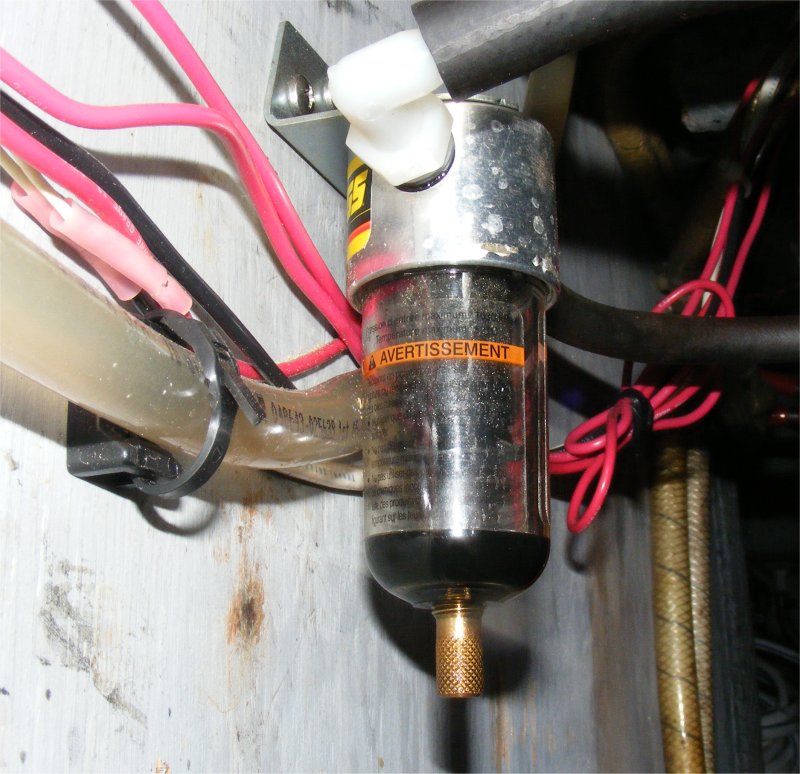When I had my starter and alternator overhauled last spring, both were found soaked with oil inside that clearly came from the crankcase breather tube that ended right above them near the air intake.
On the advice of the person who knows more about boat systems than anyone I've met, I installed an oil / air separator in the breather line.

The separator collected about as much oil as you see in the picture over the first couple thousand miles. I noticed that it has been filling faster in the past couple of months but I've been operating pretty much as a powerboat.
During the oil change one day of operation before the bleed out, I found the separator filled about half way up and drained it. I've also noticed that the dipstick has been coated with oil all the way up when I pull it after a run. If I wipe it off and reinsert it, it reads properly. This is new so something seems to have been changing in the engine.
I looked at the breather last night and saw that the filter element was oil soaked. I disconnected the breather line from the block last night and tried to blow through it. I could barely get air to move, clearly over the 3 psi limit of most oil seals. Strangely, when I repeated the test this morning, air whistles through effortlessly.
The big question now may be how much damage has been done to the seals or other engine components.
On the advice of the person who knows more about boat systems than anyone I've met, I installed an oil / air separator in the breather line.

The separator collected about as much oil as you see in the picture over the first couple thousand miles. I noticed that it has been filling faster in the past couple of months but I've been operating pretty much as a powerboat.
During the oil change one day of operation before the bleed out, I found the separator filled about half way up and drained it. I've also noticed that the dipstick has been coated with oil all the way up when I pull it after a run. If I wipe it off and reinsert it, it reads properly. This is new so something seems to have been changing in the engine.
I looked at the breather last night and saw that the filter element was oil soaked. I disconnected the breather line from the block last night and tried to blow through it. I could barely get air to move, clearly over the 3 psi limit of most oil seals. Strangely, when I repeated the test this morning, air whistles through effortlessly.
The big question now may be how much damage has been done to the seals or other engine components.
